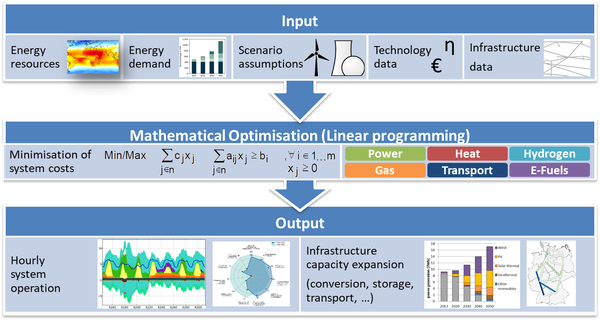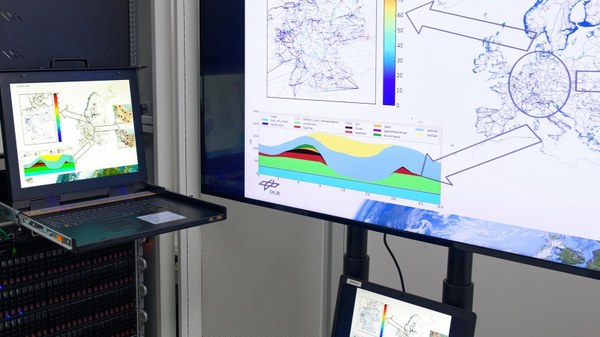Research project Sesame Seed
Design and Implementation of Open Source Energy Storage Models
The more our energy system is based on fluctuating renewable energy sources, the more relevant storage systems become for balancing demand and generation. The technical modeling of such storages turns out to be very complex. Therefore, simplified approaches have to be chosen for national and international energy systems, which at the same time adequately reflect the system effectiveness of the storage facilities. Therefore, the Sesame Seed research project, which is funded by the German Federal Ministry of Economic Affairs and Energy, aims to develop a standardised and scientifically validated approach for evaluating energy storage systems for different applications. The models developed in the project will provide answers to technical, economic, and regulatory storage questions and will subsequently be published open-source.
Forschungsprojekt Sesame Seed | |
|---|
Duration | February 2020 to July 2023 |
Funded by | Federal Ministry for Economic Affairs and Energy |
Project participants | - Fraunhofer Institute for Environmental, Safety and Energy Technology UMSICHT
- Institute of Networked Energy Systems
|
The aim of the project is to develop transparent, verifiable and open-source models for selected energy storage technologies and to make them publicly available in combination with adequate feed-in and consumption time series. These models and data will provide a reliable and comparable basis for energy system modelers and can be used in future R&D projects. Furthermore, the project results will be implemented and applied in an established modeling environment for large scale energy systems. On the one hand, this will extend the existing energy system model so that it represents energy storage systems with finer temporal, spatial and technological resolution. On the other hand, current questions such as the techno-economic evaluation of hybridised storage, the optimal relationship between storage performance and its capacity, or the technology selection for economic integration of fluctuating energies will be investigated.
As a first sub-objective, a structured overview of the different levels of detail of storage models will be provided. In parallel, a method is developed how to derive simplified but consistent models of level 2 or 1 from very detailed physical-chemical simulation models (level 3). Level 2 is understood to be generic models that are formulated in mixed-integer terms and represent non-linear technology properties. These models are suitable for the purpose of considering local energy systems, which still have to represent the properties and operation of the storage technologies quite accurately, for example, to enable an optimised design.
Level 1, on the other hand, refers to models that can be integrated into large scale energy system models for the purpose of modeling and evaluating the integration of the technology into regional to transnational energy systems. For this purpose, these models must be sufficiently simplified to allow acceptable computation times with sufficient accuracy. This includes, for example, that the dependency of the efficiency on the partial load or storage level can be taken into account in an appropriate form, that charging and discharging power can be parameterised independently, and that the ratio of power to capacity can be individually adjusted. Previous energy system models (Level 0) work with strong simplifications in this respect.
Accordingly, one of the development goals of the Sesame Seed research project is to develop suitable models for Levels 2 and 1 on the basis of Level 3 models, distinguishing them from models of the previous Level 0. In contrast, no consideration is given to energy system models based on balances (Level -1), which operate without temporal resolution and therefore cannot represent storage at all, but postulate fixed ratios between the output of renewable energy sources and storage capacity.
The project team at the Institute of Networked Energy Systems has the task of demonstrating the functionality and validity of the developed storage models in the context of simple example energy systems (as a local or national energy system, depending on the level). Subsequently, the Level 1 models will be integrated into the REMix energy system model framework developed at DLR. The improved energy system model will then be used to answer various energy system questions related to storage.
In order to enable the scenario calculations described above, technical-economic analyses will be carried out in parallel to the modeling, and time series will be generated. With regard to the time series, public data sources for feed-in data from renewable sources and electricity consumption data are reviewed and, if suitable, further developed in combination with existing data in the project. The focus here is on a higher temporal resolution, as sub-hourly resolutions are indispensable for technology simulations. In order to improve the spatial resolution, the most recent land use data will be integrated into the processing of the data. The generated models and data will be made available to the scientific community.
In the overarching context, the Sesame Seed research project is a core component of the IEA Task 32 "Open Sesame", in which international research institutions deal on the development, evaluation and use of storage models. In this context, another project goal is the internationalisation of the results and the international validation of the models in order to achieve the necessary reliability and acceptance in the scientific community both nationally and internationally.
Further Information on the Research Project Sesame Seed:






